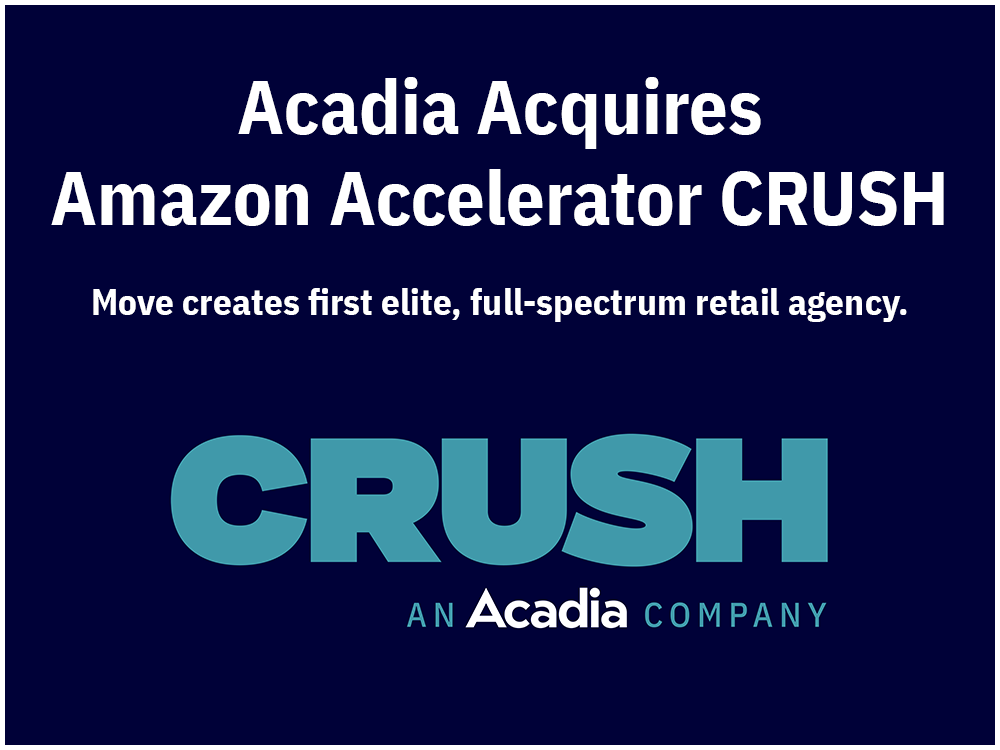🎧 On the go? Listen to this roundup in audio format.
Amazon's AI ecosystem is evolving rapidly, and two terms—COSMO and Rufus—are at the heart of the conversation. While they’re often used interchangeably, they represent distinct layers of Amazon’s AI-powered shopping experience.
Let’s explore what sets them apart, the data models behind them, how optimization strategies are shifting, and what the future of e-commerce might look like with these technologies at the helm.
COSMO and Rufus: What Is the Difference?
At first glance, COSMO and Rufus may seem interchangeable—both are deeply tied to Amazon’s generative AI push. But the distinction is critical:
Rufus is the customer-facing AI assistant. Launched in 2023, Rufus operates as a conversational shopping guide within Amazon's interface. It helps shoppers navigate the massive product catalog by responding to natural language queries in a helpful, trustworthy tone. Think of it as a friendly guide that helps users discover the right product based on need, preference, and context.
Behind the scenes, though, powering Rufus is COSMO—Amazon’s proprietary, advanced AI system. COSMO doesn’t have a logo, a landing page, or a customer-facing presence. But it’s the engine behind the curtain, ingesting and interpreting the data needed to generate personalized, intent-driven experiences.
Where Rufus is the voice and interface, COSMO is the brain or the LLM architecture that understands why people shop the way they do and uses that understanding to shape what products are surfaced, recommended, and prioritized.
COSMO is the eye in the sky. It’s the part you don’t see, but it’s driving the entire experience.
To sum it up:
- Rufus = The interface and conversation layer (a friendly store clerk you talk to).
- COSMO = The powerful AI engine and decision-maker behind the scenes (the brain that knows your preferences, tracks your habits, and tells the clerk what to suggest).
Data Models That Power Rufus and COSMO
Prior to COSMO, Amazon's personalization was largely confined to modules: “Pick up where you left off,” “Related to items you've viewed,” etc. But the actual search and browse experiences were still fairly generic. With COSMO embedded deeper into Amazon's infrastructure, that’s changing fast.
Every interaction on Amazon creates a digital footprint. COSMO analyzes that footprint across:
- Past purchases
- Browsing patterns
- Categories you ignore
- Features you prioritize (e.g., low-sugar products, BPA-free, etc.)
COSMO allows Amazon to factor in intent and previous behavior in a much more sophisticated way.
To simplify, imagine entering a grocery store with hidden sensors. The store "learns" your habits: if you always skip the soda aisle and buy organic produce, it’ll eventually stop showing you sugary options and start suggesting health-focused alternatives. That’s COSMO in action—removing irrelevant clutter and prioritizing products based on your “why.”
Rufus is then the interface that interacts with this intelligent backend. Ask it a question, and it pulls from COSMO’s model of your preferences, along with collective insights from millions of other users.
This shift marks a major evolution from older models where recommendations were primarily based on what people also bought or frequently viewed.
Now, it’s about why they bought—and whether your behavior suggests you’ll do the same.
Optimizing for AI-Powered Search (Rufus) vs. Traditional Keyword-Based Search
In the past, optimizing for Amazon search followed a fairly rigid playbook:
- Identify high-volume, high-relevance keywords
- Insert them into titles, bullet points, and descriptions
- Focus copy on features and benefits
But with Rufus and COSMO in play, this is no longer enough.
Here's what optimization looks like today:
- Natural Language Matters: Rufus doesn’t just match keywords—it understands and responds to questions. Content must now be written in conversational, need-based language, mimicking how real people speak.
- Prompt-Based Optimization: Rufus logs the prompts and questions that led to conversions. These successful prompts become valuable optimization data, which can be integrated back into copy and even images (more on that shortly).
- From Static Copy to Storytelling PDPs: PDPs (Product Detail Pages) now need to tell a cohesive story—not just display specs. Every element of the Product Detail Page (PDP)—images, video, reviews, A+ content—now influences how COSMO ranks the product. User-generated content, review summaries, and mobile readability all matter.
- Image and Video SEO: Rufus now processes images and videos, not just text. Static lifestyle images are less effective unless they contain text overlays that reflect popular shopper queries. Think: "Strong handles for heavy groceries" embedded on a tote bag image.
- Audience-Centric Copy: Instead of just listing features, content now needs to address specific personas and use cases. A winning format includes three product-driven bullet points and two audience-focused ones, ensuring a balance of utility and empathy.
You could say AI added a bit of a human touch.
This shift means understanding why your product was created and who it serves—then building content that talks to that person, not just describes the object.
Measuring AI-Specific Optimization
So how do you know your AI-focused optimization is working?
In the past, optimization success was mostly judged using keyword data. You'd track how well a product ranked for certain keywords, and whether adding those keywords to your title, bullets, or backend fields helped improve your visibility and conversion.
Now, with AI models like COSMO and Rufus in play, the game has changed. Keywords still matter, but they’re only one part of a broader picture. Here's what brands are now using to track performance:
Key Metrics That Still Apply (but with a twist)
1) Conversion Rate (CVR): This remains a central metric. If your product page is better aligned with customer intent (thanks to AI optimization), more shoppers will complete purchases. You're still tracking CVR, but now you’re watching it in the context of AI-driven placements, not just traditional search.
2) BSR (Best Seller Rank): BSR is influenced by conversion and sales velocity. If AI-optimized pages perform better with Rufus (i.e., they appear higher in its recommended results), you should see improved BSR over time.
3) Organic Share of Voice: Brands are looking at how often their products appear organically in key placements — especially when prompts or questions are entered into Rufus. If your PDP is well-optimized for AI, it should appear in these top recommendations.
Testing & Measuring AI Impact
Here’s where things get interesting — and a bit different from classic SEO:
4) Prompt-Based Testing: Brands are now manually testing prompts in Rufus.
Before optimization, they input a natural-language query like “best protein powder for muscle recovery” and note whether the product shows up.
After AI optimization (3–6 months later), they test the same prompt again.
If the product now appears in the top five results that Rufus suggests, it’s a sign that AI picked up on the improved PDP content.
This isn’t automated (yet) — it’s human-led and time-intensive, but it provides a real-world validation of how AI is interpreting your content.
Time and Learning Curve
5) Algorithm "Learning Time": It can take up to six months or longer for the AI (especially COSMO) to fully register and respond to updates made to PDPs. That’s because the AI models need to re-crawl and contextualize the changes before surfacing them in results. Patience is key.
Human Insight + AI Feedback
6) Feedback from Rufus and Reviews: Besides direct prompts, Rufus also reads reviews, lifestyle images ( if they include text/infographics), and even branded videos. So part of optimization measurement is checking whether those content elements are helping the product pop up more in Rufus' suggestions.
Simple lifestyle images don't tend to appear in Rufus-driven results — but those with user-centric callouts (like "ergonomic grip for moms") do. So teams are A/B testing image types and watching which ones improve discoverability.
Correlation Over Causation
A lot of what brands can do right now is correlative, not causal. That is, we can’t yet get a clean “Rufus ranking report” from Amazon (like we have for keywords). But we can track surrounding indicators (BSR, CVR, prompt tests, page engagement) to see if our optimizations are likely driving AI behavior.
What the Future Holds
The future of Amazon search isn’t a simple fork in the road between “AI” and “traditional” search. Instead, the two are converging.
Will Rufus Replace Traditional Search?
Probably not entirely—but its influence will grow significantly.
Julian Galindo, Senior Account Manager at Acadia, predicts a 50/50 split, where AI tools like Rufus seamlessly integrate into the traditional experience. Predrag Vetnic, Retail Marketplaces Account Strategist at Acadia, is even more bullish, suggesting a 60/40 lean toward AI, pointing to Amazon’s recent moves:
- Shutting down “Inspire”, its TikTok-style feed for discovering products
- Launching “Interest AI,” which curates products based on user passions and behaviors
In the end, Amazon wants to create a personalized shopping environment for every user—where irrelevant results vanish and tailored discovery feels intuitive, fast, and frictionless.
Imagine starting a traditional search, then getting nudged by Rufus to refine your results or discover an unexpected product. Or being served product suggestions before you even search—based purely on your behavior.
We may soon stop thinking in terms of “AI vs. traditional search” altogether. Instead, it will become one integrated, evolving experience, where the lines blur and personalization is embedded everywhere.
Final Thoughts
Amazon’s AI landscape is evolving fast. Rufus and COSMO are leading a shift in how shoppers discover products and how brands must market them.
The age of keyword-only optimization is fading. In its place is a nuanced, human-centric, AI-enhanced strategy—one that demands creativity, empathy, and constant experimentation.
For brands willing to adapt, the opportunity is immense. For those who resist? Well, COSMO will probably forget to show them.
Give It a Listen
You can tune in for the full discussion with Julian Galindo and Predrag Vetnic on the Ecommerce Braintrust hosted by Julie Spear and Jordan Ripley.
This show gives you access to the world's best brains when it comes to building momentum online for established consumer brands. Join in and listen to discussions with expert guests about e-commerce strategies, trends, and innovations.

